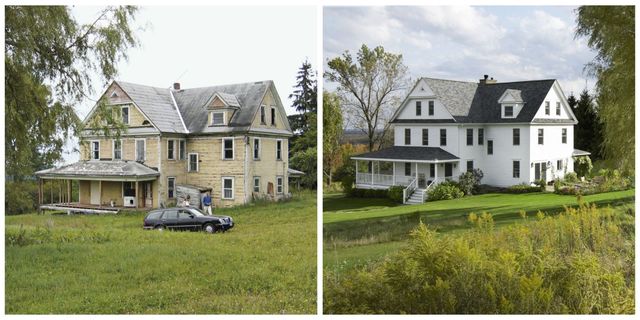Miley Cyrus and modernizing a victorian house Montclair: 10 Surprising Things They Have in Common
1. Know your maintenance cycles. Many buildings require tuckpointing upkeep every 50 to 60 years.
2. Match the mortar. New mortar should match as closely as possible in color, consistency, and elevation. Using excessive Portland cement in the mix creates tough mortars, which can harm old buildings.
3. Never ever grind out joints. Just shabby mortar needs to be removed. If someone tells you otherwise, run.
4. Never use sealers. Sealants trap moisture, compounding issues during freeze/thaw cycles.
5. Replace in kind. Damaged masonry systems need to be replaced whole or by means of Dutchmen of the exact same material. Spaces filled with putty don't last.
-- Jacob Arndt, Conservation Specialist, Architectural Stone Carver
Radiators
6. Do not throttle a one-pipe steam radiator The steam and condensate have to share that confined area. Keep the valve either totally open or totally near to avoid water hammering and squirting air vents.
7. Create a best pitch. One-pipe steam radiators must pitch toward the supply valve. Use 2 checkers under radiator feet-- they're the perfect shape and size.
8. Gain control. Thermostatic radiator valves are a terrific way to zone any radiator and save fuel. Hot-water and two-pipe steam radiators get them on the supply side; one-pipe steam radiators get them in between the radiator and the air vent.
Old radiator.
( Image: Sylvia Gashi-Silver).
9. Get a fantastic surface. Pros concur that sandblasting followed by powder finish gives the very best, lasting, non-sticky finish-- however don't try this in the house.
10. Don't fret about fires. Even with steam heat, a radiator gets just about half as hot as the temperature needed to kindle paper, so you can rest easy.
-- Dan Holohan, Author, The Lost Art of Steam Heating.
Woodworking.
11. Use heartwood. Heartwood is always the most disease-resistant. Sapwood of most types need to never ever be utilized.
12. Rift or quarter-grain cuts are best. These cuts are the most steady. Flat grain typically expands and contracts seasonally at two times the rate of quartered stock.
13. Install plain sawn lumber with the heart side up. Flat lumber will use better with the heart dealing with up. If there's cupping, the edges will remain flat, and just the center will hump a little.
14. Discover to utilize hand tools. A lot of historic woodwork was produced by hand tools, and many industrial millwork (late 19th century and after) was installed with them. Historical woodwork surfaces produced with hand planes can't be reproduced by modern-day machines like sanders.
15. Usage traditional joinery. Part repair work how to restore victorian woodwork Montclair should be used conventional joinery rather of non-historic techniques like a wholesale epoxy casting of a missing part.
-- Robert Adam, Creator and Senior Advisor, Preservation Carpentry Department, North Bennet Street School.
Slate Roofing, remodeling old houses.
Slate roof on a turret, refurbishing old houses.

Slate roof on a turret. (Photo: Nathan Winter Season).
16. Determine your slate.To properly care for your slate roof, discover what kind of slate it is. Just as you can't fix a Chevy with Ford parts, you need to never ever use New york city red slate on a Pennsylvania gray slate roof.
17. Understand your roofing's durability. If your roofing only has 100 years of longevity and is 95 years old, it's not worth sinking money into. But a roofing system with 200 years of longevity that's 75 years old is a young roofing system that ought to be extremely valued and properly kept.
18. Check your roof regularly. A minimum of once a year, walk your house (use field glasses if needed) and take a look at your roofing. If you see missing out on, broken, or moving slates, or flashing that looks suspect, call your slater.
19. Look around for quality. Good slaters are out there, however you have to try to find them. It's worth the effort to have someone who genuinely knows what he's doing.
